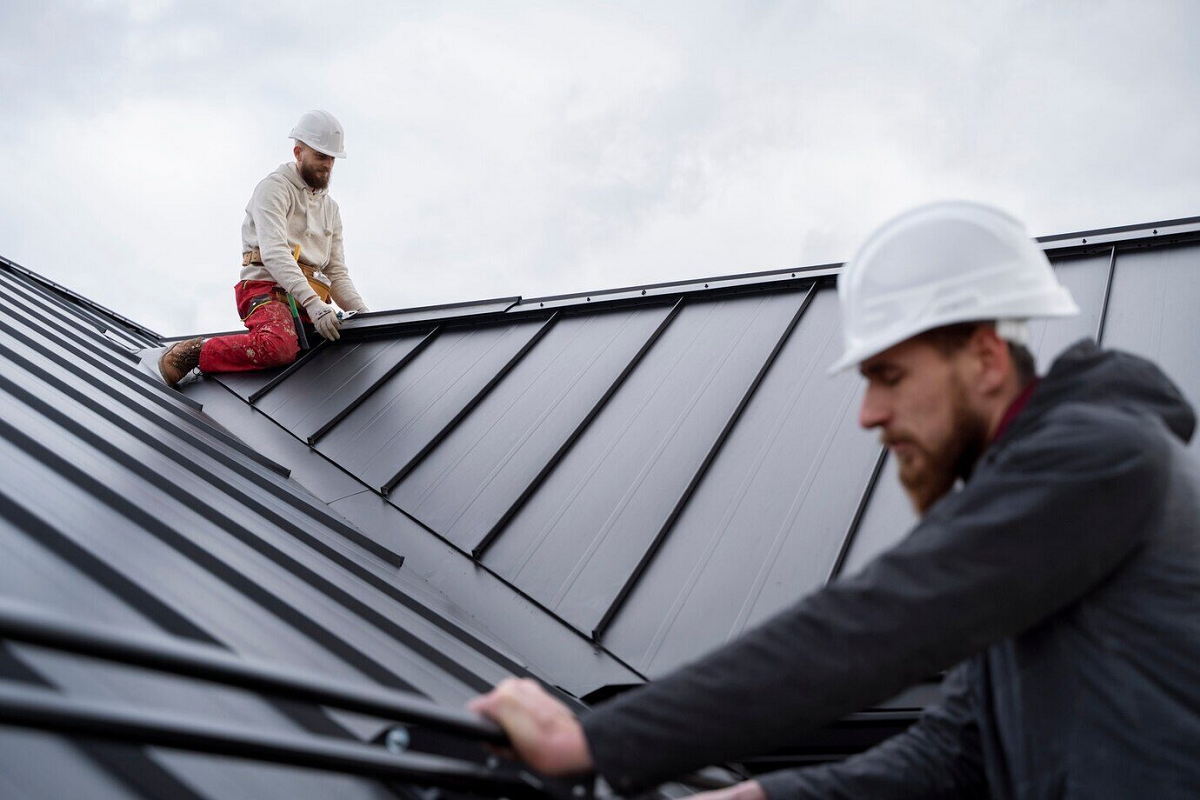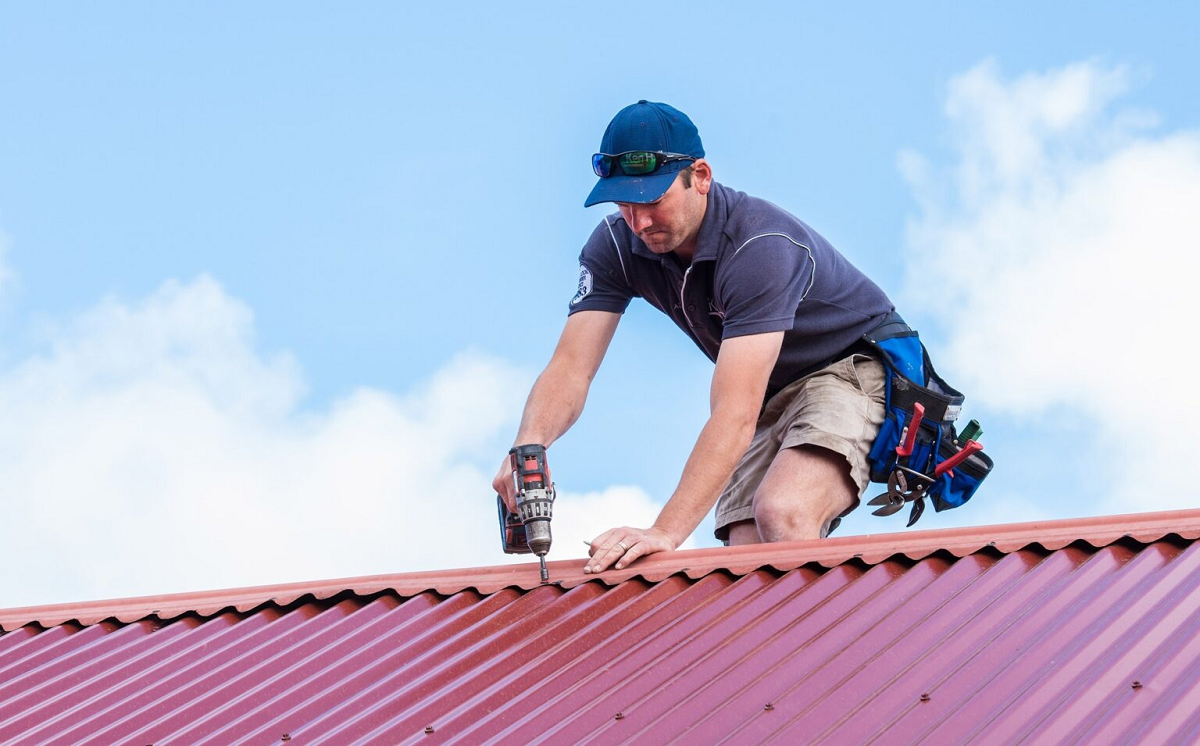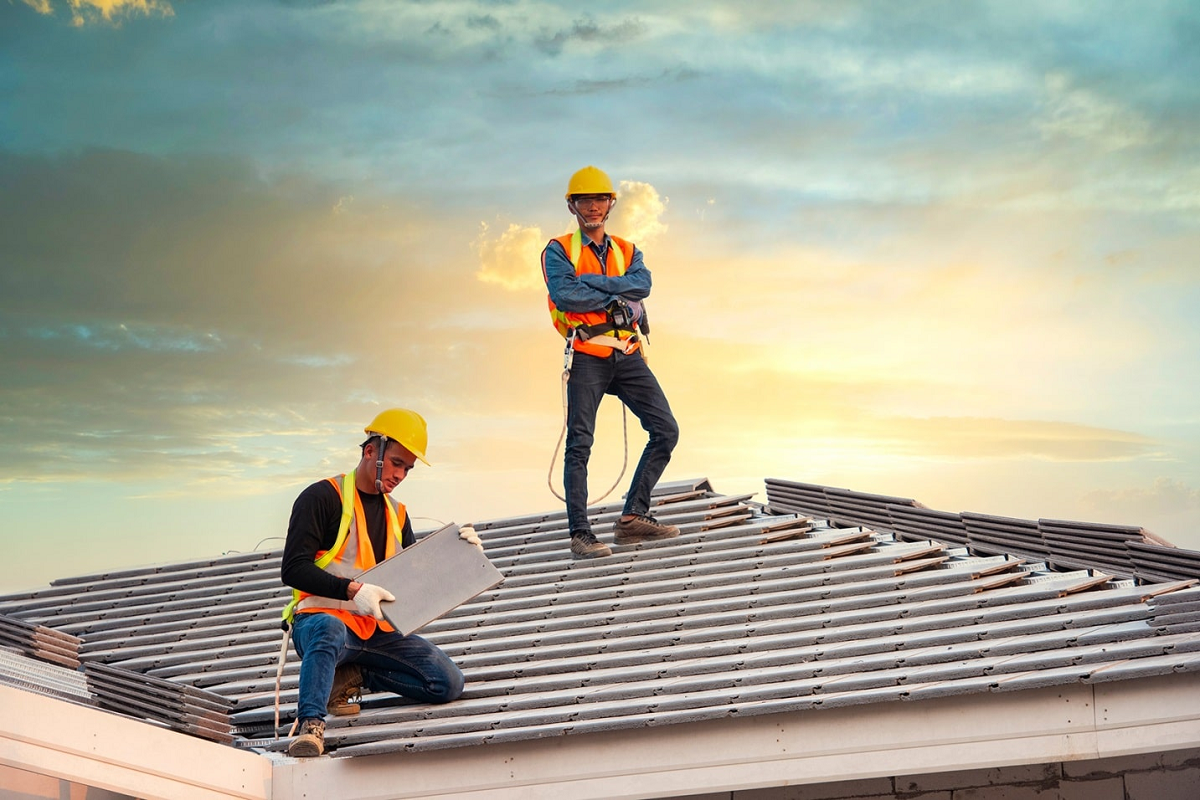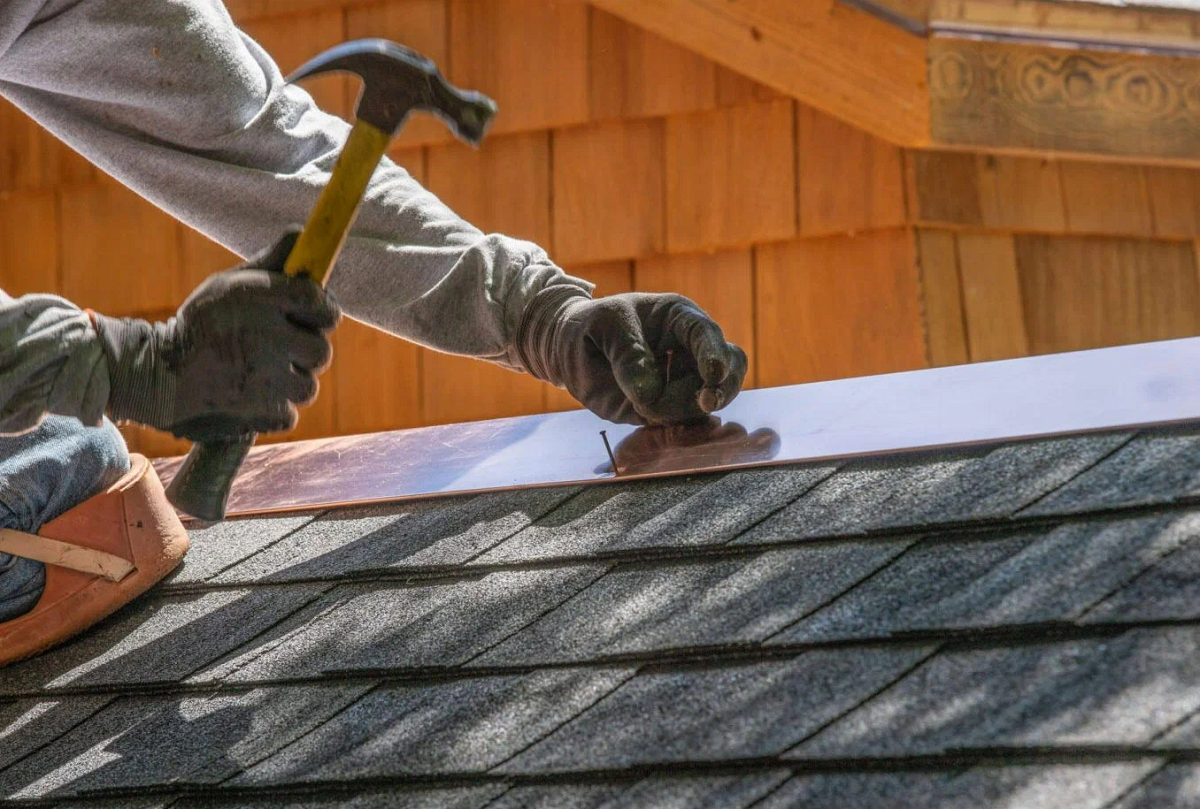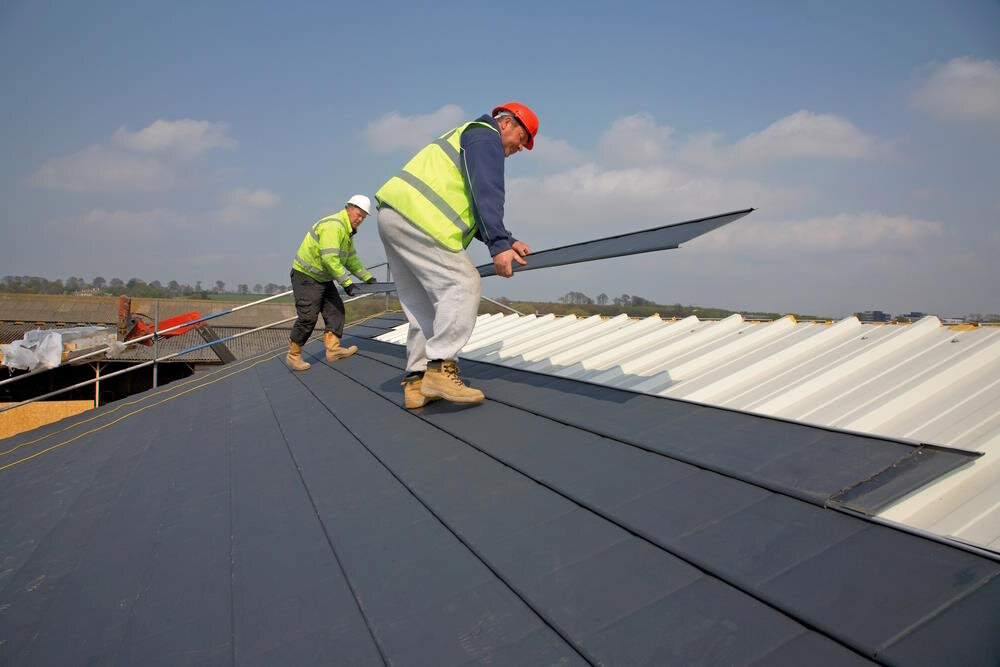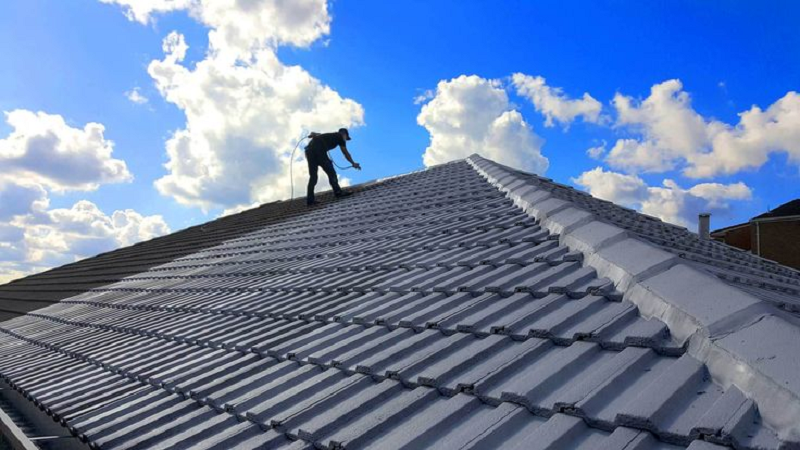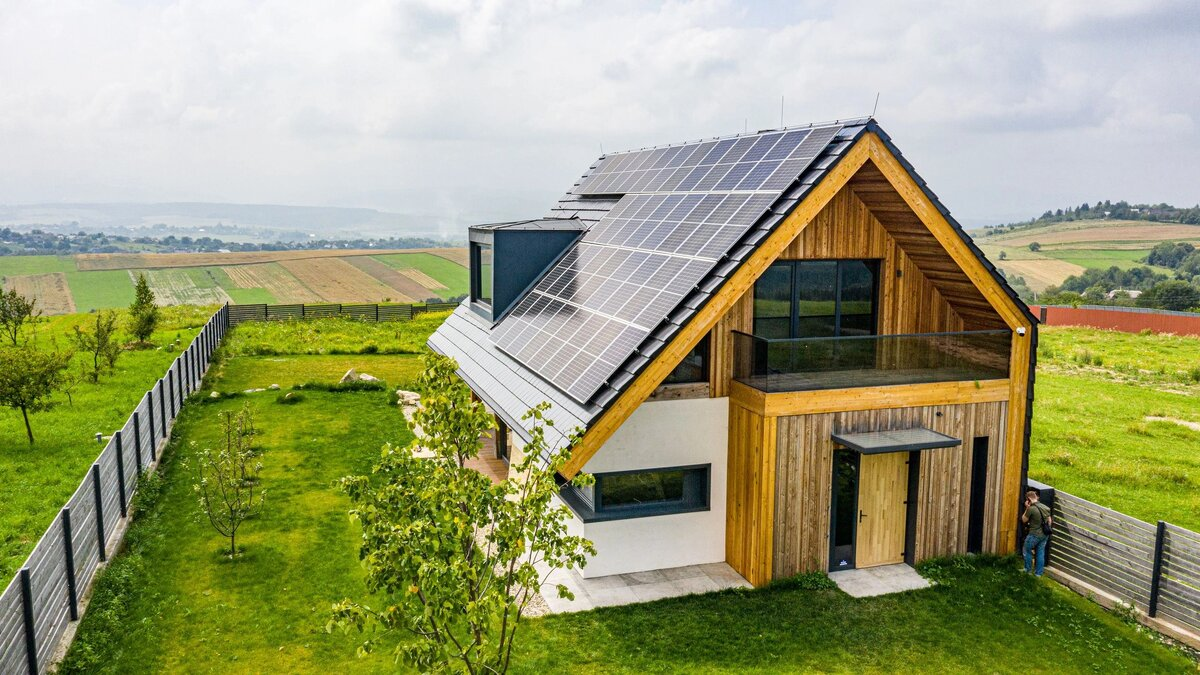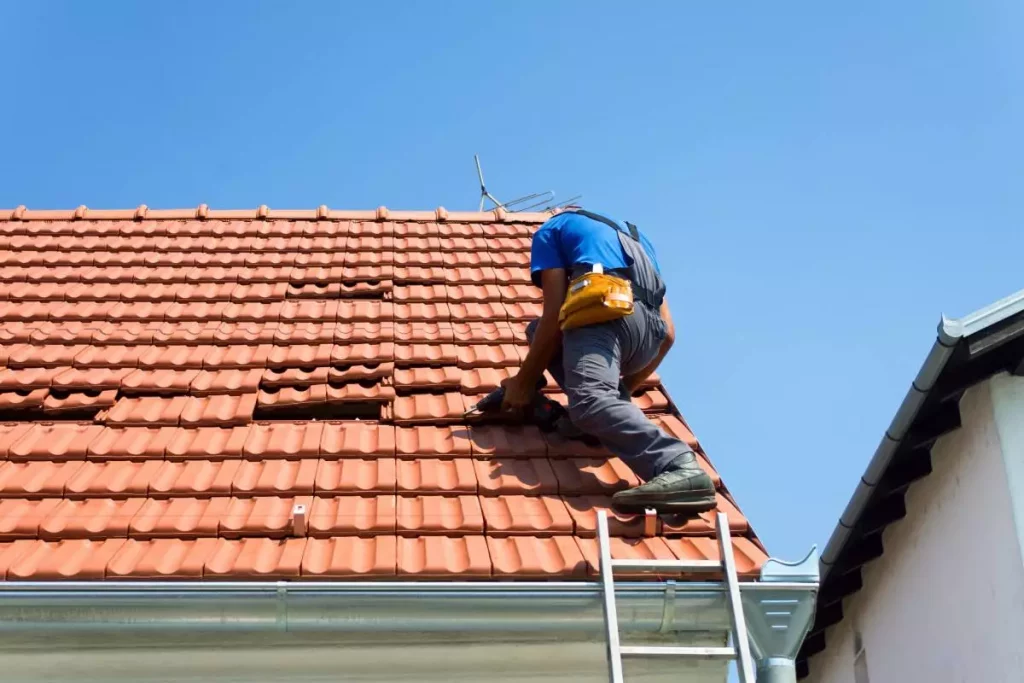CA. LIC#: 1075996
Roofing Material Safety: Which is Most Fire-Resistant?
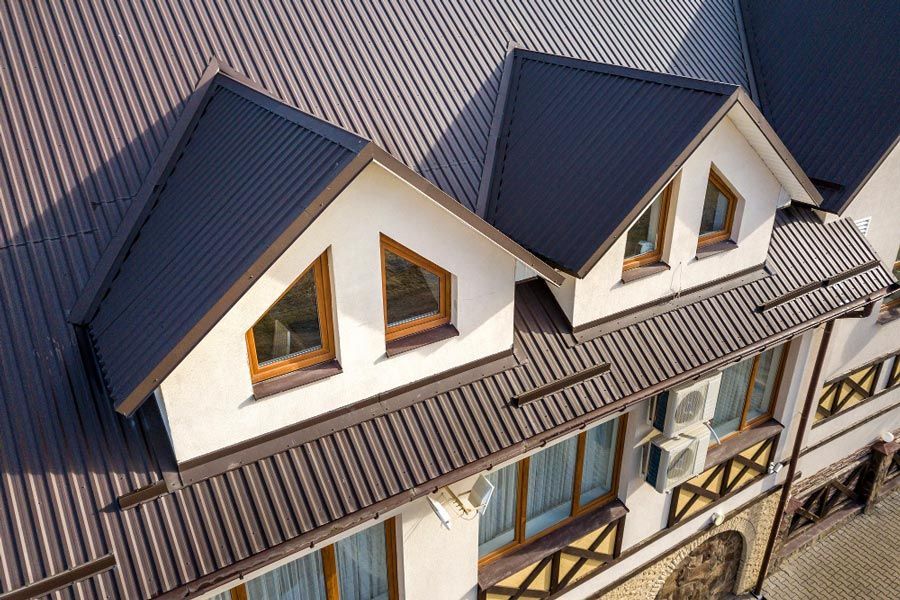
Roofing material safety is a critical consideration for homeowners, especially in regions prone to wildfires or where fire safety regulations are stringent. Among the various factors to evaluate when choosing roofing materials, fire resistance stands out as a paramount concern.
With the increasing frequency and intensity of wildfires globally, selecting the most fire-resistant roofing material becomes imperative for protecting lives, property, and communities. In this blog post, we delve into an important question: which roofing materials offer the highest level of fire resistance? From traditional options like asphalt shingles to more modern choices such as metal roofing and clay tiles, each material comes with its own set of pros and cons concerning fire safety.
Understanding these differences can empower homeowners to make informed decisions that prioritize safety without compromising on aesthetics or durability. Let's explore the nuances of fire-resistant roofing materials to help you safeguard your home against potential fire hazards.
Understanding Fire Ratings: What Do They Mean?
Fire ratings are essential indicators of a roofing material's ability to withstand fire and its spread. Typically expressed in classes, these ratings signify the level of fire resistance a material possesses.
Class A represents the highest level of fire resistance, indicating that the material can withstand severe exposure to fire. Class B and Class C follow, with decreasing levels of fire resistance. Understanding these ratings is crucial for homeowners, as they dictate the suitability of roofing materials for specific environments and regulatory compliance.
Factors such as material composition, thickness, and surface treatment influence a product's fire rating. By comprehending fire ratings, homeowners can make informed decisions to enhance the safety and resilience of their homes against potential fire hazards.
Asphalt Shingles: The Standard in Fire Resistance?
Asphalt shingles have long been regarded as a standard choice for roofing due to their affordability, versatility, and decent fire resistance. Typically achieving a Class A fire rating, asphalt shingles are composed of fiberglass matting coated with asphalt and mineral granules.
While they provide a basic level of fire protection, it's essential to note that not all asphalt shingles are created equal. Some higher-quality variants may offer enhanced fire resistance through added coatings or modifications in composition. Additionally, proper installation and maintenance are critical factors in maximizing the fire-resistant properties of asphalt shingles.
Despite their widespread use and relatively good fire performance, homeowners in fire-prone areas may seek alternative options offering superior resistance to mitigate risks effectively.
Exploring Metal Roofing: A Fire-Resistant Alternative
Metal roofing offers homeowners a fire-resistant alternative that combines durability, aesthetics, and safety, making it an excellent choice, particularly in regions prone to wildfires. Here's why exploring metal roofing as a fire-resistant alternative is worth considering.
- Inherently non-combustible: Metal roofing materials are naturally resistant to fire, reducing the risk of ignition and spread during a fire event.
- High fire ratings: Metal roofs often achieve Class A fire ratings, providing homeowners with confidence in their ability to withstand severe exposure to flames and embers.
- Exceptional durability: Metal roofing systems are known for their longevity, withstanding harsh weather conditions, including extreme heat, wind, and precipitation.
- Low maintenance requirements: Metal roofs require minimal maintenance compared to other roofing materials, offering long-term savings and peace of mind.
- Energy-efficient: Metal roofing reflects sunlight, reducing heat absorption and lowering cooling costs during hot weather, contributing to energy efficiency and environmental sustainability.
Metal roofing stands as a resilient and sustainable choice for ensuring the safety and longevity of your home.
Clay Tiles: Traditional Charm with Modern Safety
Clay tiles blend timeless aesthetics with robust fire-resistant properties, making them a popular choice among homeowners seeking both style and safety. With their natural composition and dense structure, clay tiles boast excellent resistance to fire, often achieving Class A ratings.
The manufacturing process involves firing clay at high temperatures, resulting in tiles that can withstand intense heat without igniting. Beyond their fire resilience, clay tiles offer additional benefits such as durability, thermal insulation, and resistance to pests and decay.
While clay tiles may come at a higher initial cost compared to other roofing materials, their long lifespan and minimal maintenance requirements make them a worthwhile investment for homeowners prioritizing safety and longevity.
Concrete Tiles: Durability and Fire Resistance Combined
Concrete tiles represent another durable and fire-resistant roofing option suitable for various architectural styles and climates. Composed of cement, sand, and water, concrete tiles undergo a curing process that enhances their strength and resilience to fire.
These tiles typically achieve Class A fire ratings, providing homeowners with confidence in their ability to withstand fire hazards effectively. In addition to their fire-resistant properties, concrete tiles offer exceptional durability, weather resistance, and energy efficiency, making them a practical choice for long-term protection and sustainability.
While concrete tiles may require professional installation due to their weight and specialized handling, their performance and longevity justify the investment for homeowners seeking robust fire protection and structural integrity.
Synthetic Roofing Materials: Balancing Aesthetics and Safety
Synthetic roofing materials offer a versatile solution for homeowners seeking a balance between aesthetic appeal and fire safety. Engineered from a blend of polymers and other synthetic materials, these roofing products mimic the look of natural materials such as slate, wood, or clay while offering superior resistance to fire and other environmental hazards.
Depending on the specific composition and manufacturing processes, synthetic roofing materials can achieve varying levels of fire ratings, with many products meeting or exceeding Class A standards. Beyond their fire-resistant properties, synthetic roofing materials are lightweight, durable, and resistant to rot, mold, and insect damage. Additionally, they often come in a wide range of colors and styles, allowing homeowners to customize their roofs to suit their architectural preferences while ensuring peace of mind against fire risks.
Wood Shake and Shingles: Assessing Fire Risk
Wood shake and shingles evoke a rustic charm and natural aesthetic that appeals to many homeowners. However, when it comes to fire resistance, these traditional roofing materials pose unique challenges and considerations. While some wood shake and shingle products are treated with fire-retardant chemicals to enhance their resistance to ignition, they generally have lower fire ratings compared to other roofing materials.
Typically achieving Class B or C fire ratings, wood shake and shingles may present a higher risk of combustion, especially in fire-prone regions or during dry and windy conditions. Homeowners opting for wood roofing should prioritize regular maintenance, including treatments and inspections to minimize fire risk and prolong the lifespan of the roof. Alternatively, those concerned about fire safety may explore alternative roofing materials offering higher levels of fire resistance without compromising on aesthetics.
Slate Roofing: Luxury and Fire Resilience
Slate roofing stands out as a premium choice for homeowners seeking luxury, durability, and exceptional fire resilience in their roofing material. Quarried from natural stone, slate tiles offer unparalleled beauty, longevity, and resistance to fire, water, and extreme weather conditions. With a dense and non-combustible composition, slate roofs typically achieve Class A fire ratings, providing homeowners with confidence in their ability to withstand fire hazards effectively.
Beyond their fire-resistant properties, slate tiles are renowned for their longevity, often lasting a century or more with proper maintenance. While slate roofing may come at a higher upfront cost compared to other materials, its timeless elegance, durability, and superior fire resistance make it a worthwhile investment for homeowners seeking premium quality and long-term protection for their homes.
Green Roofing: Natural Beauty with Fire Safety Considerations
Green roofing combines natural beauty with fire safety measures, making it popular among eco-conscious homeowners. Here are some key considerations for ensuring fire safety with green roofing.
- Fire-resistant plants: Selecting vegetation with low flammability can help reduce the risk of ignition and spread during a fire event.
- Regular maintenance: Removing dead vegetation and maintaining a well-watered and healthy green roof can mitigate fire hazards.
- Installation of fire barriers: Incorporating fire-resistant materials in the roof assembly can provide additional protection against flames and embers.
- Proper design: Ensuring adequate spacing between plants and minimizing the accumulation of dry debris can enhance the fire resilience of green roofs.
- Compliance with local regulations: Familiarize yourself with fire safety requirements and regulations in your area to ensure your green roof meets necessary standards.
While green roofing offers environmental benefits, prioritizing fire safety is crucial. By incorporating these considerations, you can enjoy the beauty of a green roof while enhancing its safety against fire hazards.
Comparing Costs: Fire Resistance vs. Budget Constraints
When considering roofing materials, homeowners often weigh the benefits of fire resistance against budget constraints. While materials offering higher levels of fire resistance may come at a premium cost, the investment in safety and peace of mind can outweigh the initial expenses.
It's essential for homeowners to evaluate the long-term value and potential savings associated with choosing fire-resistant roofing materials. Factors such as lifespan, maintenance requirements, energy efficiency, and insurance discounts for fire-resistant roofs should be taken into account when comparing costs.
Additionally, homeowners in fire-prone areas may find that the added protection afforded by fire-resistant roofing materials justifies the higher upfront investment. Ultimately, striking a balance between fire safety and budget Constraint is a personal decision that requires careful consideration of priorities, risk factors, and available options.
Ensuring the fire safety of your home through the right choice of roofing material is paramount. Understanding fire ratings provides valuable insight into the level of protection different materials offer against potential fire hazards. From traditional options like asphalt shingles and wood shake to modern alternatives such as metal, concrete, and synthetic roofing materials, each presents unique advantages and considerations concerning fire resistance.
Whether you prioritize durability, aesthetics, or environmental sustainability, there's a roofing solution that meets your needs while enhancing the safety and resilience of your home. At Avalon Roofing Services, we understand the importance of safeguarding your investment, your home, and your family. With over 30 years of experience serving Manteca, we're committed to providing professional roofing contractor services that prioritize quality, safety, and customer satisfaction.
Contact us today at (209) 380-1275 or reach us after hours at (209) 483-7593 to discuss your roofing needs and schedule a consultation. Trust Avalon Roofing Services for all your roofing needs and rest assured knowing you've chosen a trusted partner in protecting your home.
We are a licensed roofing contractor in Manteca, CA specializing in residential and commercial roofing services. We service Manteca CA, Lathrop CA, French Camp CA, Modesto CA, Mountain House CA, Tracy CA, and other surrounding cities.
Quick Links
© 2023 Content, including images, displayed on this website is protected by copyright laws. Downloading, republication, retransmission or reproduction of content on this website is strictly prohibited.

